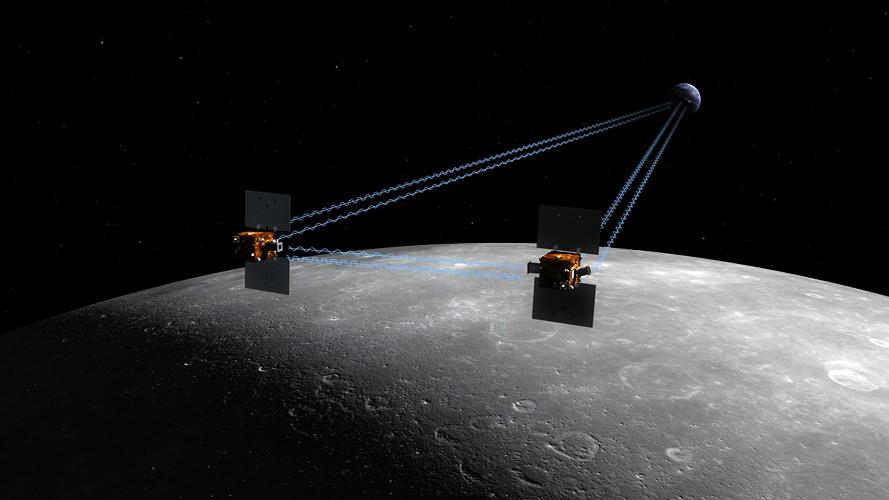The Gravity Recovery And Interior Laboratory (GRAIL) is a mission that will measure the lunar gravity field in unprecedented detail. The twin spacecraft will orbit the Moon in tandem and collect scientific data for several months.
The GRAIL mission will cost $375 million and launch in 2011 as part of NASA’s Discovery Program. The window for the launch is 26 days long and opens on September 8, 2011.
After a dual launch aboard a Delta II 2920-10, the spacecraft will spend three to four months cruising on a low-energy trans-lunar trajectory. The two spacecraft will orbit the moon on 50 km, near-circular polar orbits, with a spacecraft separation of 175 – 225 km. The science phase of the mission will take 90 days, and it will be followed by a 12-month science data analysis.
The technique used by GRAIL for collecting scientific data was also used for the Gravity Recovery And Climate Experiment (GRACE) mission, launched in 2002. Small changes in the distance that separates the two spacecraft are translated in variations of the lunar gravity field.
The GRAIL spacecraft are based on the Lockheed Martin XSS-11 bus. The XSS-11 (Experimental Small Satellite 11) is the result of research done at Lockheed Martin Space Systems in the field of agile and affordable micro-satellites. Interesting to mention here is that there were speculations that XSS-11 could also be used as the base for the development of a kinetic anti-satellite weapon (ASAT).
The spacecraft is a rectangular composite structure. Two non-articulated solar arrays and lithium ion battery provides power. The attitude control system, the power management system, and the telecommunications system are also inherited from the XSS-11 bus.
The payload consists of a Ka-band Lunar Gravity Ranging System (LGRS), which is derived from the instrument carried by the GRACE spacecraft.
The spacecraft flight operations will be conducted from Lockheed Martin’s Denver facility. Science Level 0 and 1 data processing will be done at Jet Propulsion Laboratory (JPL), Level 2 data processing at JPL, the Goddard Space Flight Center (GSFC) and the Massachusetts Institute of Technology (MIT). The final scientific data will be delivered by MIT.
While missions like the Lunar Reconnaissance Orbiter (LRO) will find safe landing sites, locate potential resources, and take measurements of the radiation environment of the lunar surface, GRAIL will explore the moon from crust to core, and determine the moon’s internal structure and evolution.
More information about GRAIL is available on the GRAIL mission page on MIT’s web site.










 Subscribe to our RSS feed
Subscribe to our RSS feed











There are no comments.
Add A Comment